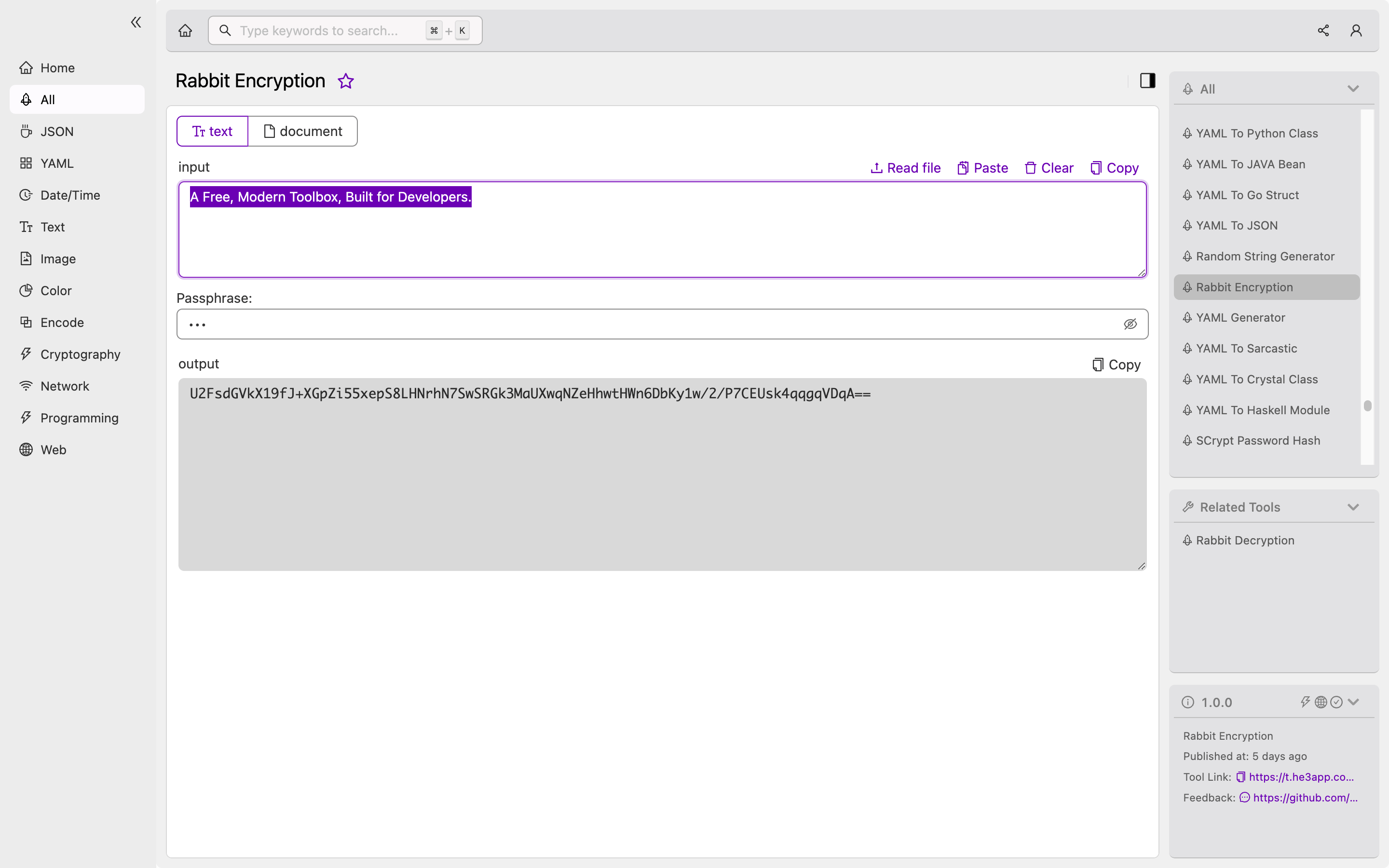Introduction
Information security is crucial in the digital age, and as a developer, you need to ensure that your users’ data is protected from malicious attacks. One way to achieve this is by using encryption algorithms that secure data transmission and storage. In this article, we will explore Rabbit Encryption, a popular symmetric key encryption algorithm used in software and hardware devices.
What Is Rabbit Encryption?
Rabbit Encryption is a stream cipher encryption algorithm that uses 128-bit secret keys to encrypt and decrypt data in blocks of any size. It was designed by Martin Boesgaard, Mette Vesterager, and Thomas Pedersen in 2003, and has since gained popularity due to its high speed, low memory usage, and robust security features. Like other symmetric key encryption algorithms, Rabbit Encryption uses the same key for both encryption and decryption.
How Does It Work?
Rabbit Encryption works by generating a keystream, which is a sequence of random bits that are combined with the plaintext using the XOR operation to produce the ciphertext. The keystream is generated by a feedback mechanism that combines the previous keystream output with the secret key and an initialization vector (IV). The IV is used to ensure that the keystream is unique for each encryption operation, even if the same secret key is used.
Here is a sample code to encrypt a file using Rabbit Encryption in Python:
from Crypto.Cipher import ARC4
key = b'This is a secret key'
iv = b'This is an IV'
cipher = ARC4.new(key + iv)
with open('plaintext.txt', 'rb') as f:
plaintext = f.read()
ciphertext = cipher.encrypt(plaintext)
with open('ciphertext.txt', 'wb') as f:
f.write(ciphertext)Or you can use Rabbit Encryption tool in He3 Toolbox (https://t.he3app.com?xmdp) easily.

Key Features of Rabbit Encryption
Here are the key features of Rabbit Encryption:
| Features | Description |
|---|---|
| Speed | Rabbit Encryption is faster than other encryption algorithms such as Advanced Encryption Standard (AES) due to its simple design and low computational overhead. |
| Security | Rabbit Encryption is highly secure against attacks such as ciphertext-only attacks and chosen plaintext attacks. It also provides forward secrecy and resistance to timing and cache-based attacks. |
| Memory usage | Rabbit Encryption has low memory usage, making it ideal for resource-constrained devices such as IoT devices and mobile phones. |
| Key length | Rabbit Encryption uses a 128-bit secret key, providing a high level of security. |
Scenarios for Developers
Developers can use Rabbit Encryption in various scenarios, such as:
- Securing communication between a client and a server
- Encrypting sensitive data such as passwords and credit card numbers
- Securing data transmission in IoT devices and mobile phones
- Storing sensitive data in databases and file systems
Rabbit Encryption is a versatile encryption algorithm that can be used in various programming languages such as Python, Java, and C++.
Misconceptions and FAQs
Myth #1: Rabbit Encryption is not secure.
False. Rabbit Encryption is highly secure against various attacks and is widely used in software and hardware devices.
Myth #2: Rabbit Encryption is slow.
False. Rabbit Encryption is faster than other encryption algorithms such as AES due to its simple design and low computational overhead.
FAQ #1: Is Rabbit Encryption an open-source encryption algorithm?
Yes. Rabbit Encryption is an open-source encryption algorithm that is free to use and modify.
FAQ #2: Can Rabbit Encryption be used for hashing?
No. Rabbit Encryption is a symmetric key encryption algorithm, and it cannot be used for hashing.
FAQ #3: Can Rabbit Encryption be used for public key encryption?
No. Rabbit Encryption is a symmetric key encryption algorithm, and it cannot be used for public key encryption.
Conclusion
Rabbit Encryption is a robust and efficient encryption algorithm that provides high-speed encryption with low memory usage. It is highly secure against various attacks and is widely used in software and hardware devices. As a developer, you can use Rabbit Encryption to secure your data transmission and storage and ensure that your users’ data is protected from malicious attacks. Learn more about Rabbit Encryption from Wikipedia and Crypto++.
